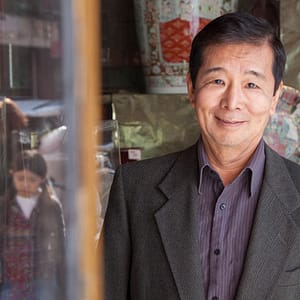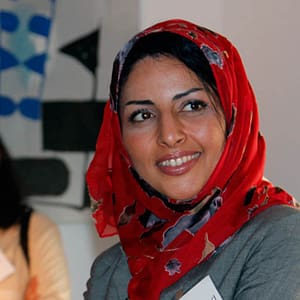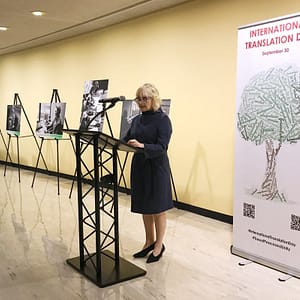New York City Expands Language Access
New York City is one of the most diverse cities in the world, and its residents speak a vibrant mix of languages. In Washington Heights you may find a family of Tagalog speakers with neighbors whose native language is Serbo-Croatian. Visit Crown Heights and you might hear Yiddish and French Creole spoken along the same city block. From the Laotian speakers in the Northern Bronx to the Urdu speakers in Forest Park, NYC is truly a melting pot of languages and cultures.
A few stats:
- Of the 8.5 million people living in the five boroughs, nearly half speak a language other than English at home.
- More than three million New Yorkers are foreign born, with over one-quarter having arrived in the year 2000 or later.
- Almost 25% of NYC residents (1.8 million people) have Limited English Proficiency.1
Take a look at this interactive map for a graphic breakdown of the city’s many languages and where they are spoken.
And Then There’s Queens
NYC’s largest borough, Queens, holds the honor of being the most linguistically diverse place in the world. Queens is home to multigenerational families of immigrants from around the globe, and, according to The Endangered Language Alliance, its residents speak as many as 800 languages.
This gorgeous map, created for the book Nonstop Metropolis: A New York City Atlas, by Rebecca Solnit and Joshua Jelly-Schapiro, illustrates the density of languages throughout the borough.
Language Barriers
Limited-English Proficiency (LEP) means that an individual does not speak English as his/her primary language and has limited ability to read, speak, write or understand English. Such language barriers prevent people from taking full advantage of local government and public services. Limited English may make residents reluctant to participate in town hall meetings or other public forums, reach out to local agencies, or fully understand public health and safety information.
With its large percentage of LEP residents, New York City has a compelling obligation to implement legislature that enables LEP individuals to fully engage with these agencies in a language they understand. A new local law takes some steps forward.
Get in Touch!
Reach out to discuss your next translation project with a member of our team.
Language Access in New York
First, a little history. Two organizations, Make the Road New York and The New York Immigration Coalition, were instrumental in passing the following two laws that collectively call for city government agencies to provide free translation, interpretation, and other communication assistance services to LEP New Yorkers.
New York City Local Law 73 (The Equal Access to Human Services Act), enacted in December 2003, requires that the City’s Human Resources Administration (HRA) make language services available to LEP individuals who come to HRA sites to enroll in safety-net programs such as Medicaid and Food Stamps. The bill requires that sites either have in-person bilingual personnel available or offer over-the-phone interpreting services. It also requires that HRA sites translate documents into the languages covered by the law: Arabic, Chinese, Haitian Creole, Korean, Russian, and Spanish.
In July 2008, Mayor Michael Bloomberg expanded language access when he signed Executive Order 120 into law, establishing uniform translation and interpretation policies for all City agencies that have direct interaction with New Yorkers. Executive Order 120 requires every such City agency to provide language assistance into the top six languages spoken by New York residents: Spanish, Chinese, Russian, Bengali, Haitian Creole, and Korean.
The latest step is Local Law 30, which went into effect on July 1, 2017, expanding on the previous legislature. This new law requires that all agencies that provide direct and emergency services must translate documents commonly distributed to the public into four languages not currently included in Executive Order 120: Arabic, French, Urdu, and Polish.
This new law also mandates that City agencies providing direct public services must offer telephonic interpretation in at least 100 languages and develop a language access implementation plan to be posted on their agency website. These requirements have been written into the Administrative Code as a permanent part of City law.
The passing of this law means that 86% of LEP New Yorkers will now have access to documents translated in their own language, up from 81%. It is expected that the additional four languages will benefit an estimated 100,000 people.
Featured Services
Learn more about…
Why it Matters
Language should not be a barrier. By ensuring effective communication with the public, Local Law 30 can improve the reach of city agencies and enhance the safety of all New Yorkers.
Long-time Brooklyn residents, the Eriksen Translations team takes pride in the work we do helping City agencies ensure LEP residents have equal access to services and receive critical health and safety information in a language they understand. As a translation company founded by a Norwegian immigrant with staff from around the world, we applaud New York’s efforts and those of other cities making progress in increasing language access for all individuals.
Nationwide
The growth of immigrant communities is transforming the demographics of not only New York but the United States as a whole. Other US states and city governments that are taking strong action to implement local language access legislation include North Carolina, California, Oregon, Los Angeles, and others. Read more about these nationwide efforts here.
 Named to the 2024 Inc. 5000 list of fastest-growing companies and ranked among the world’s top 100 language service providers by CSA Research
Named to the 2024 Inc. 5000 list of fastest-growing companies and ranked among the world’s top 100 language service providers by CSA Research

